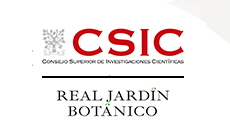Scientific Area
Consensus classifications are crucial for conservation: How CITES utilises checklists
ID: 613 / 227
Category: Abstract
Track: Pending
Proposed Symposium Title: Consensus classifications are crucial for conservation: How CITES utilises checklists
Authors:
Ronell R Klopper1,2
Affiliations: 1 South African National Biodiversity Institute, Pretoria, South Africa 2 University of Pretoria, Pretoria, South Africa
Abstract:
The Convention on International Trade in Endangered Species of Wild Fauna and Flora (CITES) aims to ensure that international trade in wild animals and plants does not threaten their survival. To manage and regulate trade in endangered species, taxa are listed on one of three CITES Appendices. Many groups are included in the Appendices via higher classification listings. In such cases an entire genus will be listed, for instance ‘Pachypodium spp.’ (i.e. all species of Pachypodium). As classifications change, genera can be split apart or lumped together. These changes in classification have dire implications for law enforcement officials who need to implement CITES regulations. The situation is further complicated when different resources provide different classifications for the same group of plants. Therefore CITES designates standard nomenclature references to use for certain listed taxa, especially those with higher classification listings. These standard references contain lists of names that are currently accepted in those taxa and forms the basis for updates to the CITES Checklist of Species and Species+ databases, which are regularly consulted by those who need to regulate international plant trade. Standard nomenclature references for CITES can take the form of published revisions or other taxonomic works, customised checklist publications produced specifically for this purpose, or time-stamped extracts from online data sources. The WFO Plant List can play an important role as a consensus classification source, curated by a global specialist-based community of experts, to be used for future CITES standard nomenclature references. Time-stamped extracts for a specific group from the WFO Plant List will be ideal to serve this purpose. Furthermore, the WFO Taxonomic Expert Networks (TENs) are ideally placed to produce customised CITES checklist publications. In fact, three such checklists based on the WFO Plant List are currently being produced for CITES by WFO TENs.




